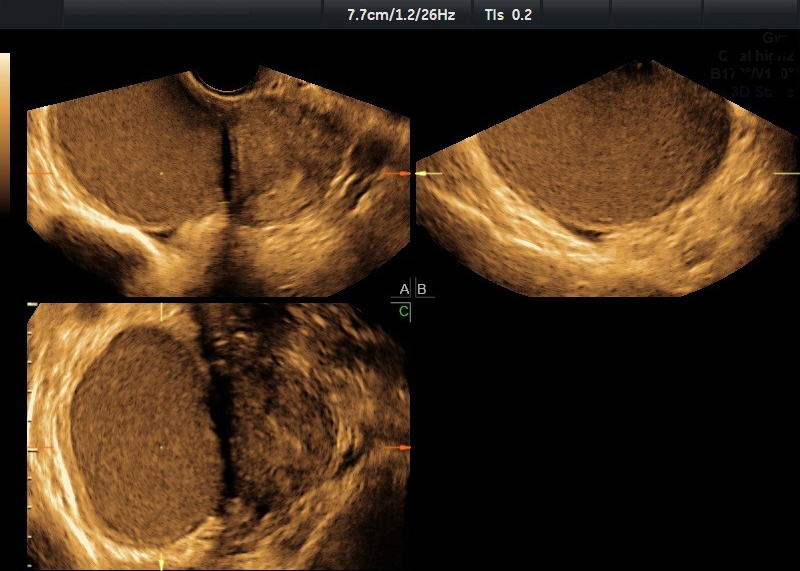Endometriosis affects about 10 percent of reproductive-age women. However, that statistic can be a little misleading. Endometriosis also affects young girls, sometimes before the onset of their first period. It also affects postmenopausal women. In short, it is a lifelong disease, and one that is diagnosed late far too often.
When an endometriosis diagnosis is delayed, symptoms can worsen and may lead to fertility issues later in life. That is why early detection of endometriomas is so important.
In adolescents, instances of endometriosis and ovarian endometriomas may be underreported. In 2010, a study published in Fertility and Sterility noted that there were no case reports of endometriomas in adolescents in this literature. Yet, just three years later, a longer review in Human Reproduction found that adolescent endometriosis does occur and should not be overlooked.
Transvaginal ultrasound has proven effective for identifying and treating these masses in adolescents. The rise in ultrasound usage could be why the reported rate of endometriomas in young girls has been increasing over the last decade.
Symptoms of Endometriosis in Teens
One of the biggest concerns for this age group is the long-term effects on quality of life and fertility that can occur if the diagnosis is delayed. Endometriosis may be asymptomatic for many women, but girls with symptomatic or deep endometriosis are more likely to miss school and possibly experience a reduced quality of life, according to the Human Reproduction study.
Chronic pelvic pain that does not improve with treatment is a common symptom for endometriosis in this age group. Girls who experience chronic pain within a short time of having their first period are more likely to have a more severe form of the disease. This pain may even be present before menstruation begins.
The Endometriosis Association notes that severe period cramps that inhibit daily activities are among the most common endometriosis symptoms in teenage girls. According to association co-founder Mary Lou Ballweg, adolescents are some of the most underdiagnosed endometriosis patients, since their symptoms are not fertility-related.
Using Ultrasound To Identify Endometriomas
Transvaginal ultrasound is a cost-effective, noninvasive option that aids in evaluating adolescent endometriosis and planning surgery for the removal of ovarian endometriomas.
Ultrasound is much gentler on patients than hysterosalpingography or laparoscopy. Preteens and teens, along with their parents, may be wary of undergoing a surgical procedure like laparoscopy to diagnose the disease; ultrasound is often a welcome alternative.
3D ultrasound can visualize the ovaries more clearly than 2D scans can, and it helps in evaluating the stroma and volume measurements more accurately, according to a study published in the Journal of Medical Ultrasound. 3D ultrasound can help determine whether or not surgery is necessary and aid in planning a surgical approach.

Endometrioma ultrasound image
Early Diagnosis for Endometriosis Management
Early diagnosis and treatment may offer the best chance of relief for adolescents with endometriosis. Plus, it's never too soon to develop a long-term plan to manage the disease. Endometriomas return at a surprisingly high rate, and research in Fertility and Sterility notes that around a quarter of patients treated with cystectomy will likely need another procedure in the future.
By recognizing the signs and making an accurate diagnosis early on, you can work with your young patients and their parents to ensure they understand this disease, its symptoms and how to proactively manage it as they enter adulthood.





